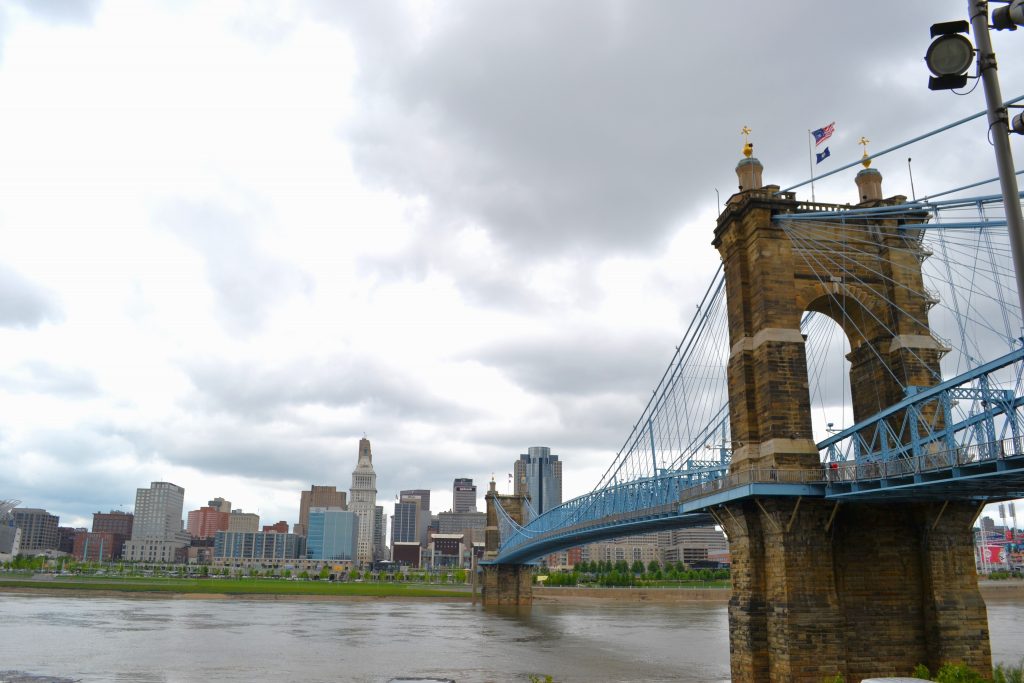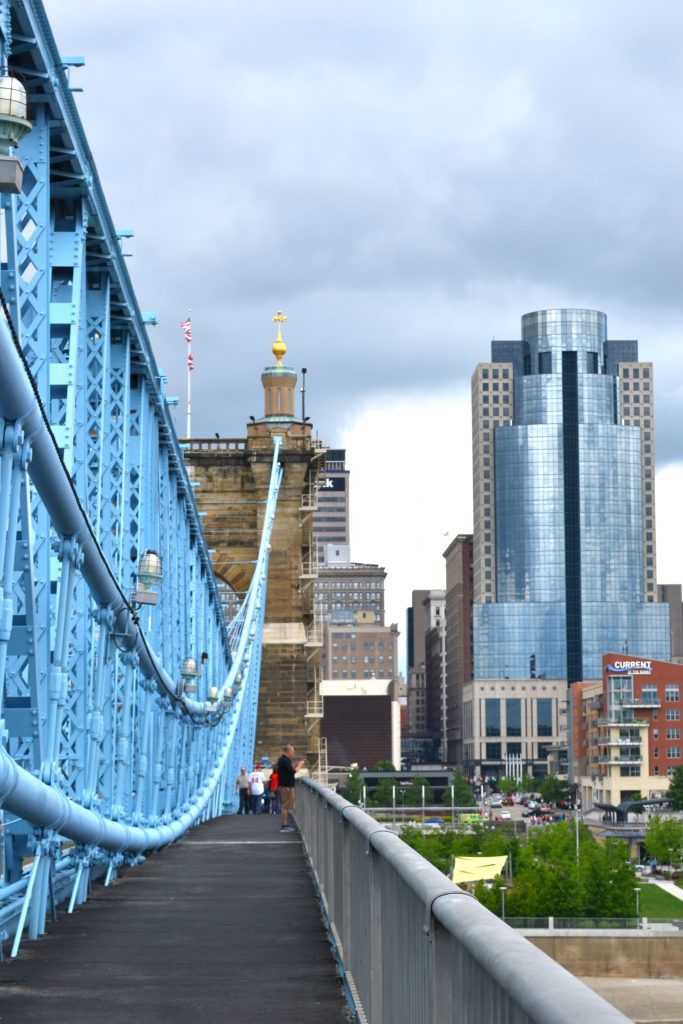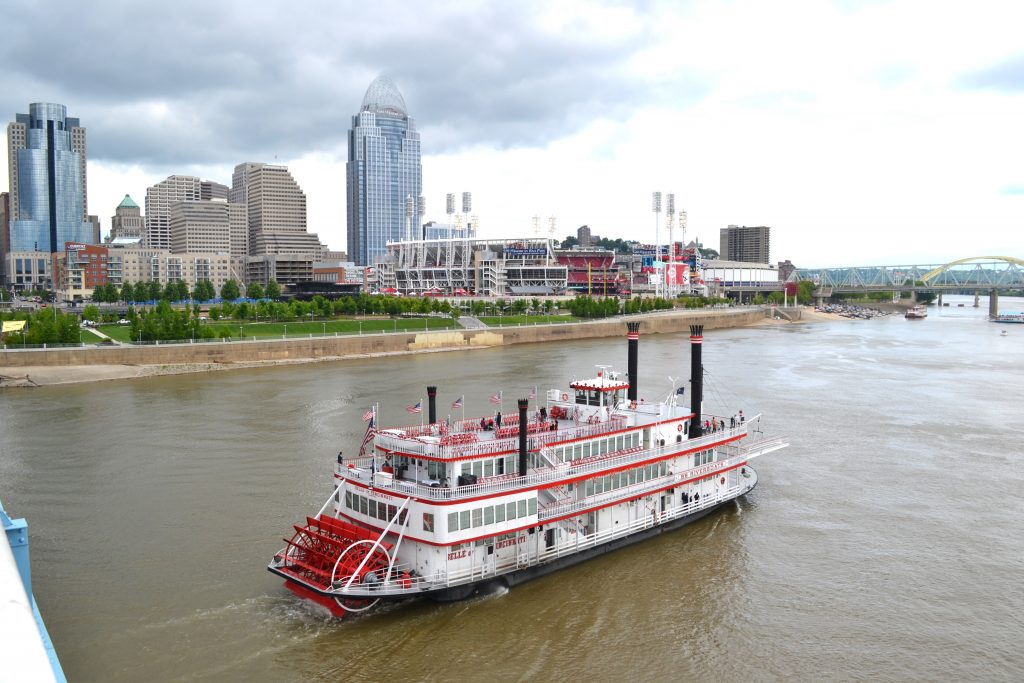Strolling towards Smale Park from The Banks, I was happy to learn that the Roebling Suspension Bridge would be reopening. Having been closed for 14 months for renovations, the opening date had been pushed back several times. Luckily, pedestrians could cross, but this was going to change the traffic pattern for downtown, just in time for Opening day.
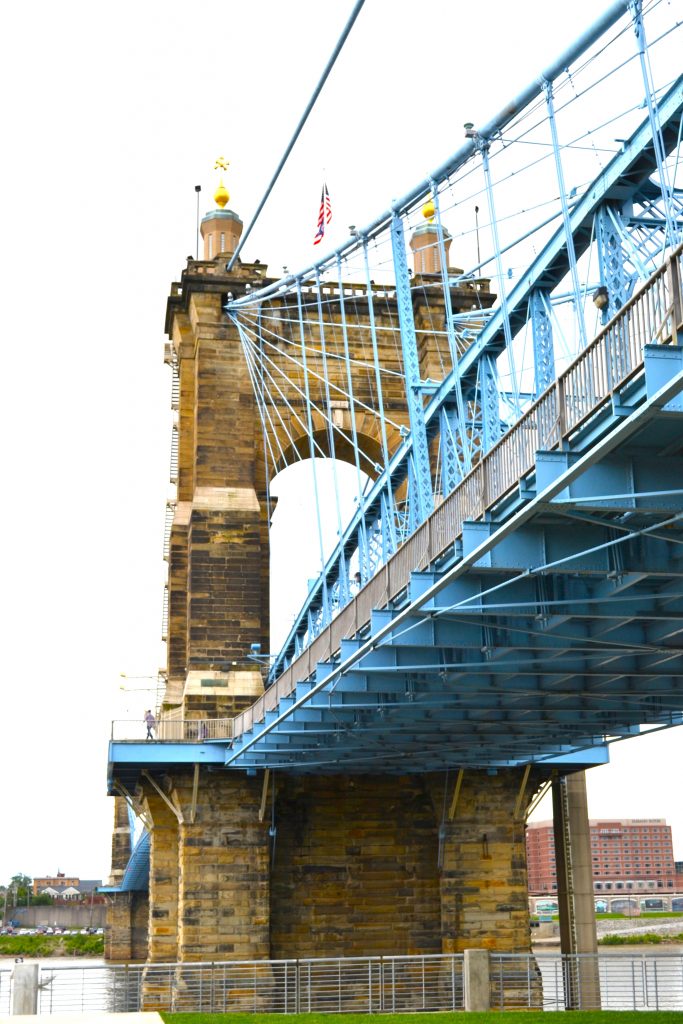
The Roebling Suspension Bridge (originally named the Covington and Cincinnati Bridge) is a Cincinnati Landmark and one of five bridges that cross the Ohio River. Each bridge is unique in its own right, but this 1,057-foot span was once the longest suspension bridge in the world.
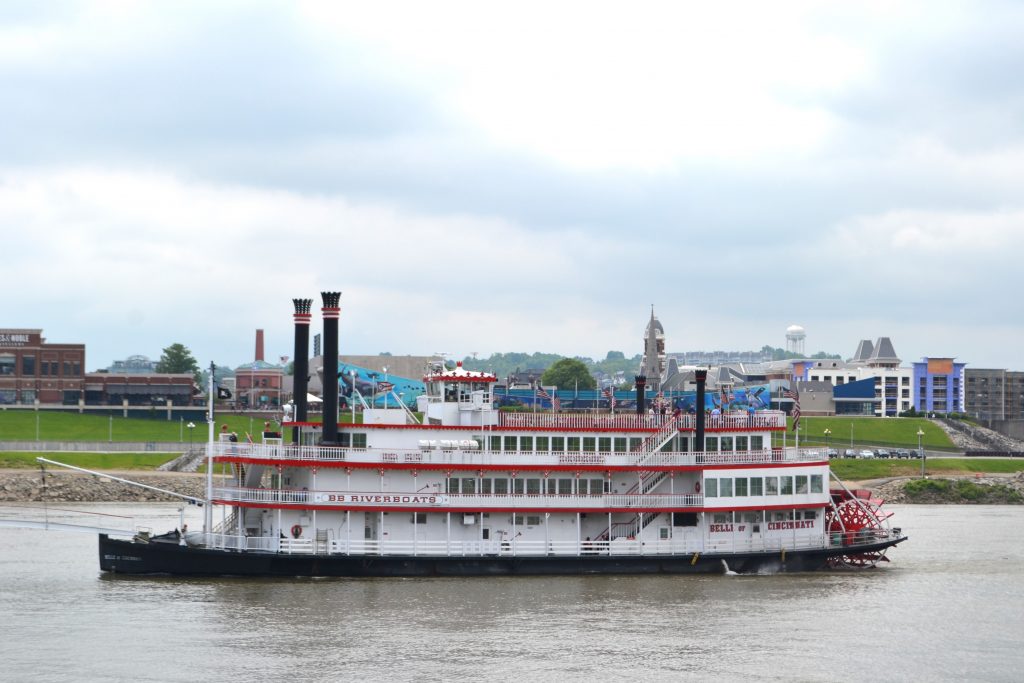
As Cincinnati continued to grow as a port city, the addition of ferries and riverboats connected the north and south shores of the river. At one point there were five ferries that crossed the Ohio. Bridges were becoming inexpensive to build which resulted in the number of ferries to disappear. Anderson Ferry is the only ferry that continues to operate on the West Side of Cincinnati. While living in Delhi, I used the Anderson Ferry to reach northern Kentucky. With winding roads traveling the hill, within minutes I could reach the airport.
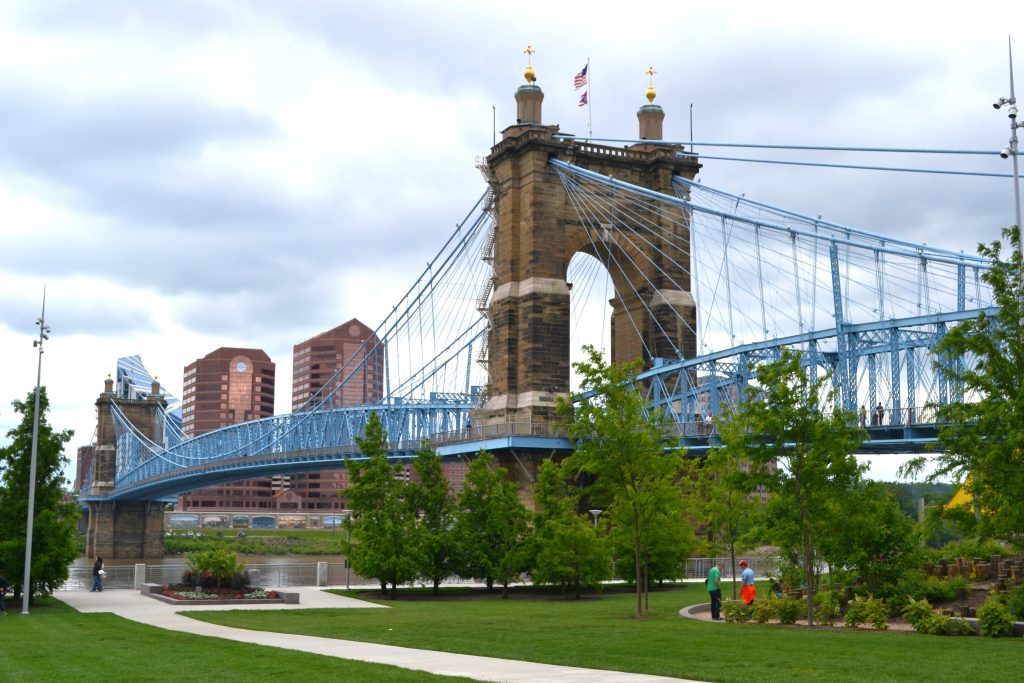
The Roebling Suspension Bridge was the first of the five bridges to cross the Ohio River from Ohio into Kentucky, but not without its controversy. In a time where steamboats transported goods from one place to the next, the captains and their crew were concerned that the bridge would interfere with their livelihood, especially during the seasonal floods.
From politics to economic challenges, the bridge finally opened in 1866 with the help of John A. Roebling, the engineer who created the bridge and Amos Shinkle. Roebling would later base his design of Cincinnati’s suspension bridge when building the Brooklyn Bridge in New York.
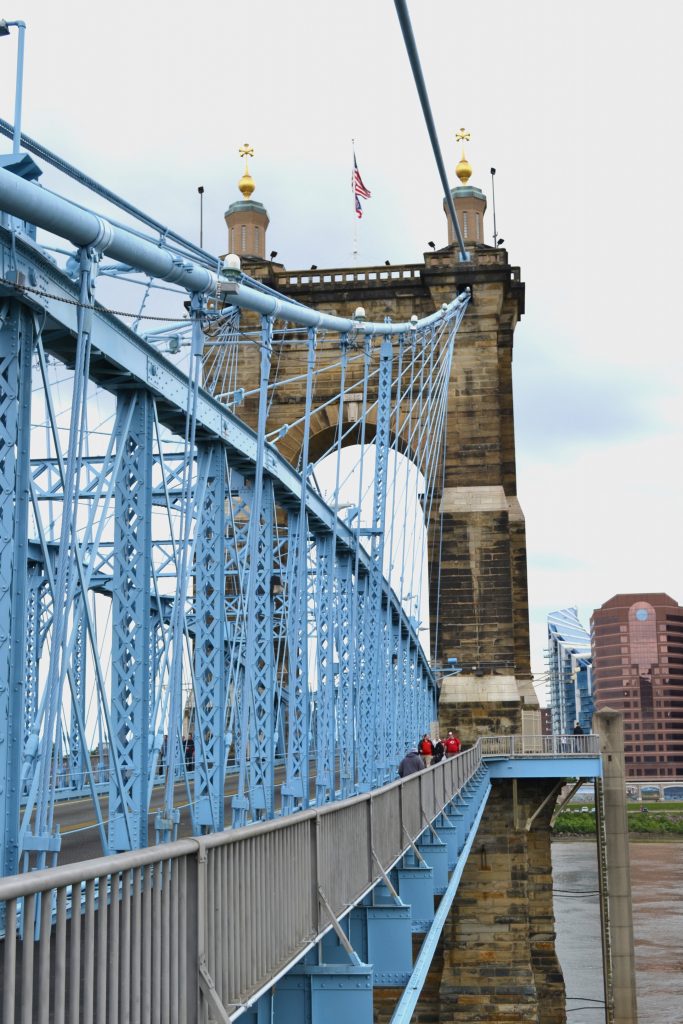
A few years later, a series of cables were added to the bridge to ensure its stability which led to the crossing of streetcars, buses and cars. Today, commuters span the bridge crossing the Ohio to reach their workplace whether by car, but or by foot. Towboat pilots who “run the bridges”, find the cluster of bridges a bit of a challenge not to make contact with the concrete posts.
The Roebling Suspension Bridge is the oldest bridge that crosses the Ohio River and is the most photographed. The bridge was designated a national historic and national civil engineering landmark.
It is amazing to think of the Ohio River’s importance to transportation of goods and people. While barges, tugboats and steamboats continue to roam its water highway, the bridges that cross this river are well traveled by cars, trains and people connecting each other from one place to the next.
Have you had the opportunity to cross the Roebling Suspension Bridge? Were you walking? Where were you going? I would love to hear your story if you would kindly leave a message in the comments section below. Many thanks for reading about my love for the Roebling Bridge and wishing you many Happy Travels.
What to See and What to Do:
Roebling Suspension Bridge
Downtown Cincinnati, OH
Where to Stay:
AC Hotel by Marriott Cincinnati at the Banks
135 Joe Nuxhall Way
Cincinnati, OH 45202
Telephone: 513 744 9900
Where to Eat:
Moerlein Lager House, Microbrewery and Restaurant
115 Joe Nuxhall Way
Cincinnati, OH 45202
Telephone: 513 421 2337
I ordered the Chef’s Charcuterie and the Fried Pickles as I enjoyed a flight of beers.
What to Read:
- The Ohio Bridge: Cincinnati’s Roebling Suspension Bridge, 1846 – 1939, by Henry R. Stevens
- Uncle Tom’s Cabin, by Harriet Beecher Stowe
- Babbitt, by Sinclair Lewis
- Back Street, by Fannie Hurst
- The Frontiersmen, by Allan W. Eckert
- Beloved, by Toni Morrison
- Cincinnati, by Lee Davis Willoughby
- Queen City Jazz, by Kathleen Ann Goonan
- The Cincinnati Red Stalkings, by Troy Soos
- The Jazz Bird, by Craig Holden
- Dead Witch Walking, by Kim Harrison
- No Police Like Holmes, by Dan Andriacco
Disclosure: Please refer to our blog disclaimer tab for more information.
